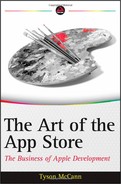CONSIDERING RISKS AND REWARDS
When people are required to pay before they play, there are certain expectations that differ along the continuum of price. The higher the price of the app, the more value it is expected to contain, often at the expense of entertainment. After all, virtually no one is going to pay $999.99 for even the best game. But if your app helps a user pass the bar exam, as in the “BarMax” app (by BarMax LLC), there may be some interest.
This is the reason games are priced lower than other apps. Although some forms of entertainment are expensive, in the end, if it's just entertainment, there are always nearly infinite options (many free, no less) that can accomplish virtually the same result. The same is not true with other types of apps such as productivity or utility apps, because these apps help you move forward as a human being. They give you points in real life, not just in the virtual world.
Let take a look at some of the main common risks and rewards for either meeting customer and niche expectations or not at these two price points.
Non-Premium Paid Apps
The most common price point for any paid app by a considerable margin is $0.99, currently making up around 28 percent of all apps (according to 148apps.biz). It's been said that this falls into impulse-buy territory, but the keyword here is “buy,” and, therefore, it's a lot more risky (relatively speaking) than a free app. True, once you make the decision to purchase, it's not much of a decision to go with that price point. But as shown in the freemium example in Chapter 7 where the average per-app transaction was a surprisingly high $14, the difficult thing for the consumer is not how much to spend when the decision has been made, but whether to buy in the first place.
When making a non-premium paid app, consider this consolidated version of risks and rewards prior to diving in:
- Number of downloads will be lower — This is why you counter it from your other apps with a free/lite version and other cross-selling methods (if possible). Some developers (such as Backflip Studios with their “NinJump HD” game) have done away with the “lite” moniker, because it has the potential to turn some customers away who are too familiar with what a lite version means.
- Revenue can be spiky — If your app only exists on paid revenue and not in-app purchases, as explained in Chapter 6, you can expect revenue and sales to be similar to a roller coaster ride.
- There will be more competition — Let's face it, the more premium priced your app is, the less competition you'll face. Ensure that you do competitive research on all price points with similar features, not just within your projected price range, most especially free!
Premium Paid Apps
Aside from being able to see large spikes in profit, the main goal with a premium app will be to protect your original content and features so that they cannot be easily copied, and to do that will raise its complexity level and thus overall cost. What this typically requires is an initial investment in creating a system that is difficult to emulate, or via trademark, copyright, or patent. You will likely either have this system in place via a proprietary other-platform app or process, or need to build it into your premium app to begin with. Therefore, both the largest risk and reward when taking on a premium app is in its potential cost because of the complexity and earnings derived at the price point.
